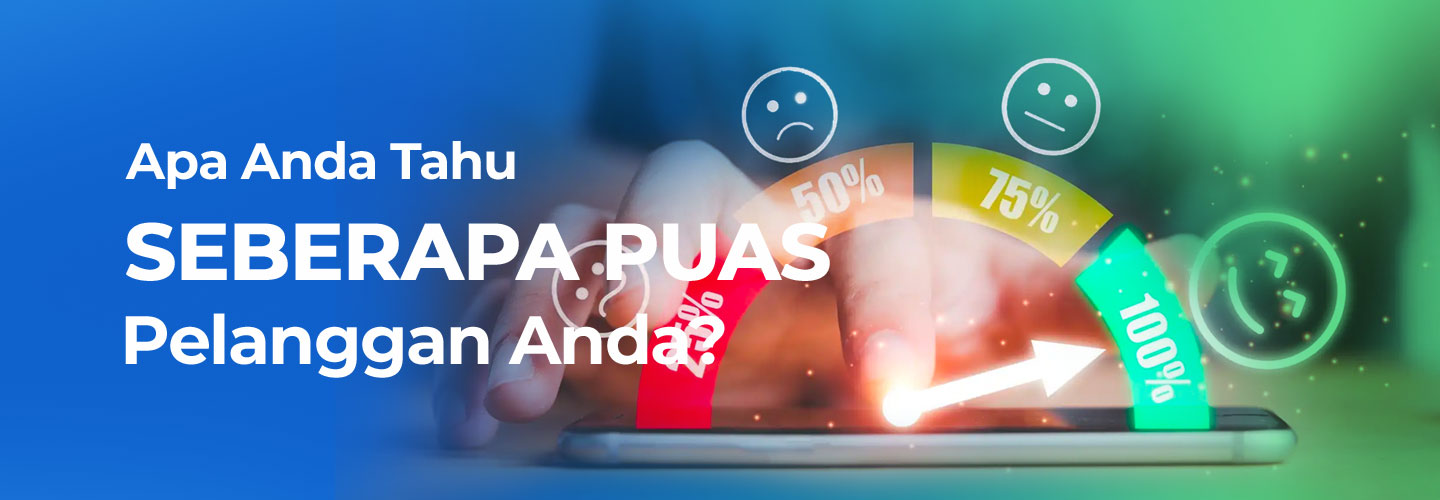Various Levels of Customer Satisfaction and Its Measuring Metrics

As a business owner, it's important to be able to make sure customers are satisfied with your service. Satisfied customers will be a solid foundation for a business. They will keep coming back and become loyal customers thanks to a pleasant experience.
Customer loyalty is the result of a business's ability to retain its customers. This can only be achieved by creating processes and supports that benefit them. Therefore, it is important to create a comprehensive strategy to achieve customer satisfaction.
How to Measure the Level of Customer Satisfaction
In general, maybe the assessment of a product owned by a business or company is subjective. Even so, it is important to be able to perform good validation of measurements including the following metrics:
- Net Promoter Score (NPS)
NPS is a metric of a measurement index that ranges from -100 to 100. The index reflects a customer's willingness to recommend a particular service to people they know.
- Customer Satisfaction Score (CSAT)
CSAT is used to measure whether the product or service you offer meets customer expectations. The focus is on finding customer pain points that require specific handling such as product delivery quality, customer service quality, or the overall experience.
- Customer Churn
Customer churn is a metric companies use to predict product ups and downs and prevent negative outcomes such as decreased revenue. This can be interpreted as a general indicator of customer dissatisfaction.
Level of Customer Satisfaction with Products
You need a good understanding of customer expectations and desires in order to create a product strategy. This plays an important role in creating a system that is able to meet and even exceed customer expectations. If implemented properly, you can identify the level of customer satisfaction based on the following classifications:
1. Unsatisfied
Through its designation, it is quite clear that the level of customer dissatisfaction is getting a quality product or service that does not meet expectations. In some ways, they may not find it helpful to offer from your business.
Dissatisfied consumers can also cause losses if not handled properly. They could potentially share their disappointment with other people who are actually included as potential target consumers.
2. Slightly Satisfied
When customers get some product services that meet expectations, but there are still other needs that have not been met. At this stage, the consumer is quite satisfied and will probably come back again. However, they can switch if they get a more attractive offer.
3. Satisfied
Satisfied customers are grouped when they get all the needs that match expectations. However, the satisfaction that is obtained is only getting something that meets expectations, nothing more.
In this stage, the level of customer satisfaction can still be improved. Satisfied customers do not necessarily recommend products to other people. Usually, they are only happy because they found the solution needed to solve their problem or need.
4. More than Satisfied (Very Satisfied)
At this stage, customers feel satisfied and happy because they get an experience beyond their expectations. Surprises that customers get usually make the product or service offered more memorable.
Simple things like this could be given to customers as free. Some of the surprises that can be obtained include product tester bonuses, discount vouchers for the next purchase, or it can also be in the form of pleasant customer handling.
5. Very Satisfied (Extremely Satisfied)
Customers who are very satisfied with your product or service offering will be the goal of a business. Usually, this stage is obtained when the product that the customer gets can consistently exceed customer expectations. At this stage, the customer will probably support product development and recommend it to others.
Based on existing metrics, you can analyze customer service and create an ideal strategy to achieve customer satisfaction. Cara will help retention increase customer satisfaction and support retention of your product or service.